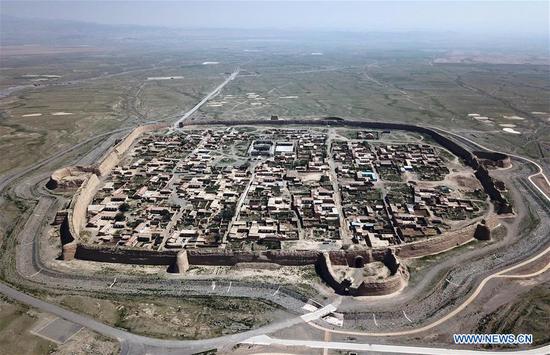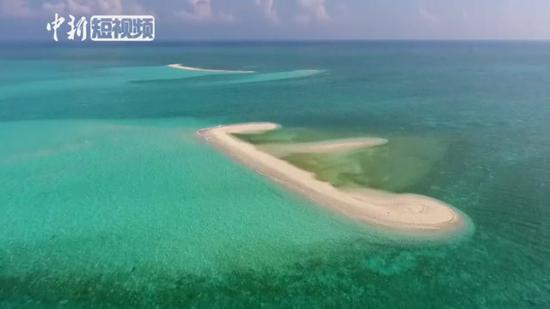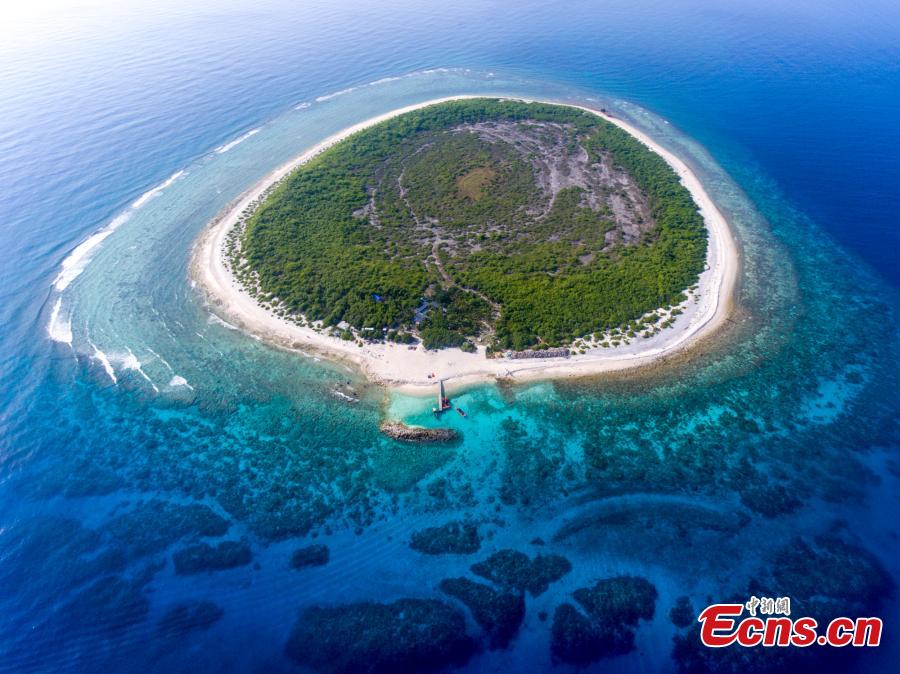
A view of Ganquan Island in the Xisha Yongle Islands group in South China's Hainan Province, May 22, 2019. Named after a freshwater well, the lush, oval-shaped island covers an area of 0.3 square kilometers. The remains of a settlement dating back to the Tang and Song dynasties was found there in March 1974, and the site was later listed as a national key cultural relics site. (Photo: China News Service/Luo Yunfei)
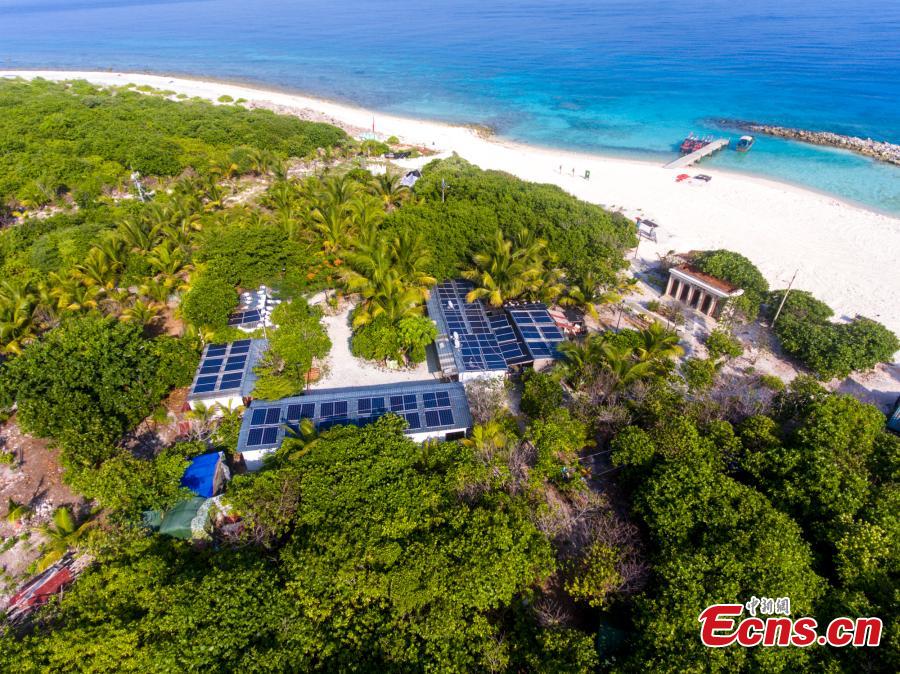
A fishermen’s house equipped with solar panel on Ganquan Island in the Xisha Yongle Islands group in South China's Hainan Province. (Photo: China News Service/Luo Yunfei)
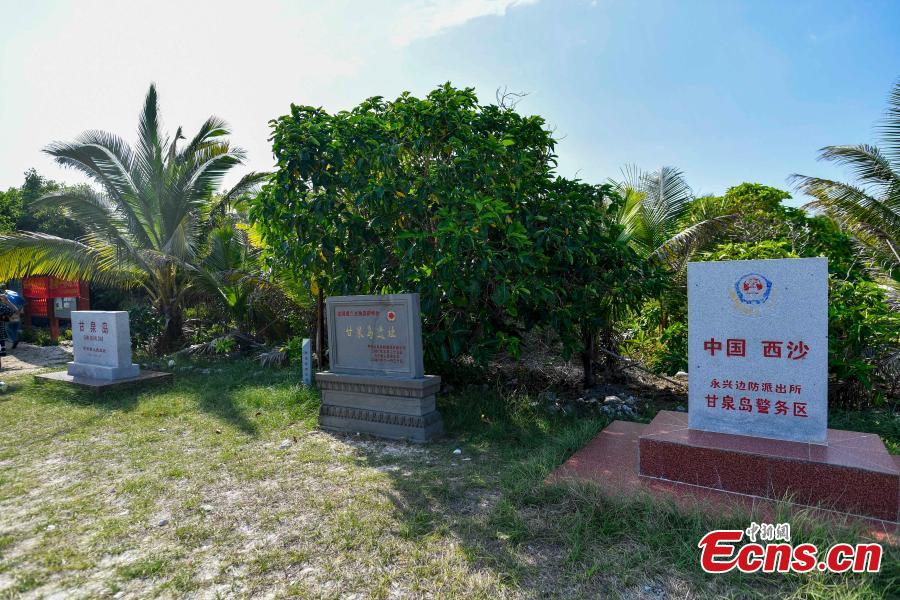
A view of Ganquan Island in the Xisha Yongle Islands group in South China's Hainan Province, May 22, 2019. Named after a freshwater well, the lush, oval-shaped island covers an area of 0.3 square kilometers. The remains of a settlement dating back to the Tang and Song dynasties was found there in March 1974, and the site was later listed as a national key cultural relics site. (Photo: China News Service/Luo Yunfei)
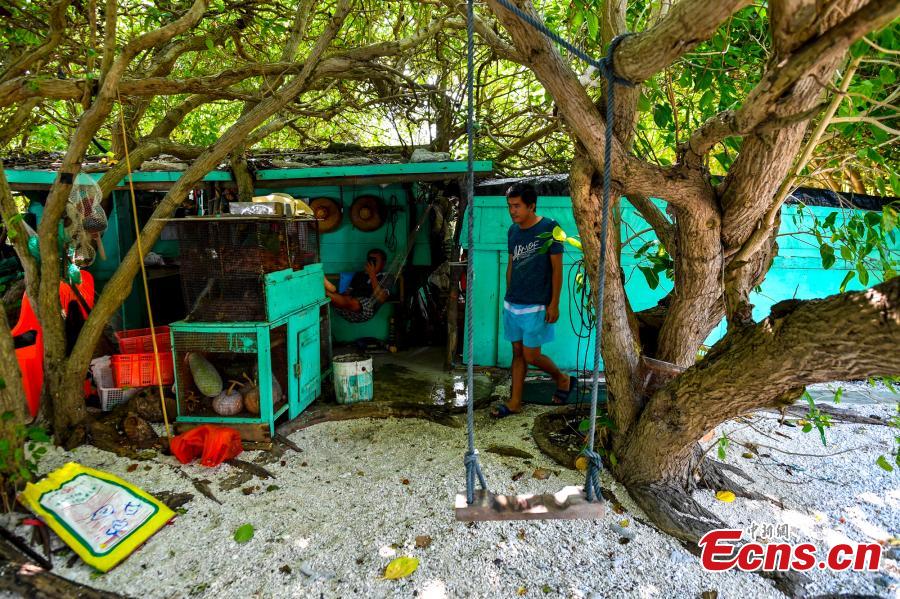
The house of a local fisherman on Ganquan Island in the Xisha Yongle Islands group in South China's Hainan Province, May 22, 2019. (Photo: China News Service/Luo Yunfei)

The house of a local fisherman on Ganquan Island in the Xisha Yongle Islands group in South China's Hainan Province, May 22, 2019. (Photo: China News Service/Luo Yunfei)
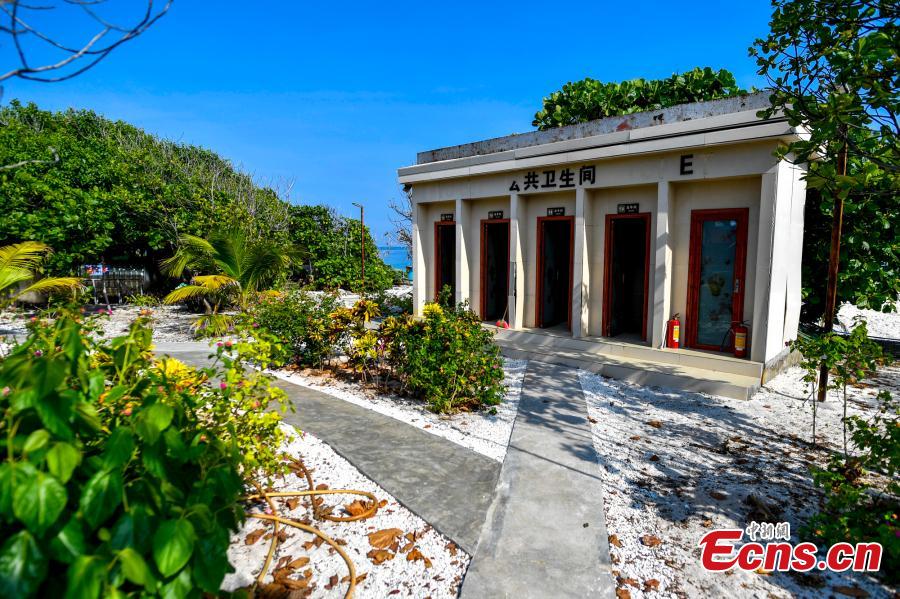
A public toilet on Ganquan Island in the Xisha Yongle Islands group in South China's Hainan Province, May 22, 2019. (Photo: China News Service/Luo Yunfei)
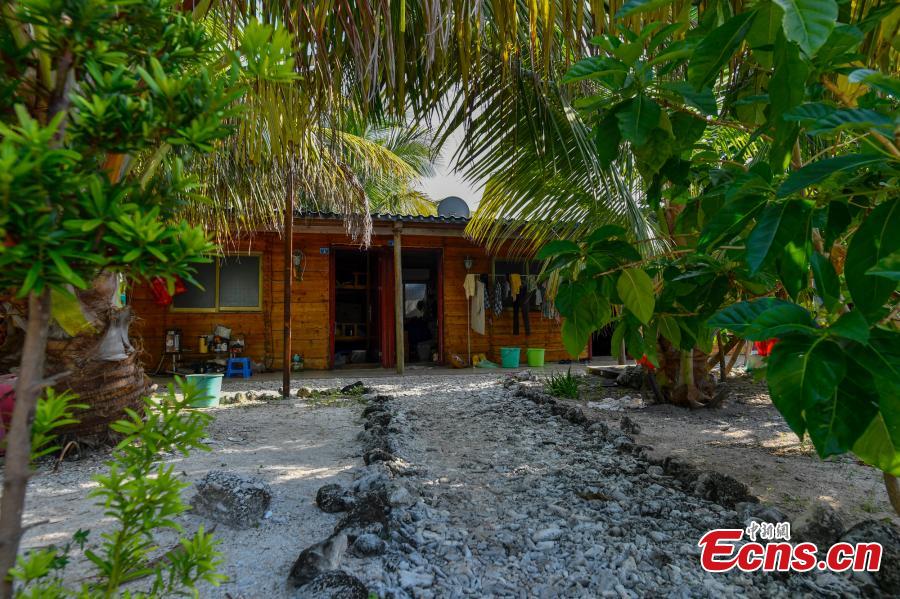
The house of a local fisherman on Ganquan Island in the Xisha Yongle Islands group in South China's Hainan Province, May 22, 2019. (Photo: China News Service/Luo Yunfei)
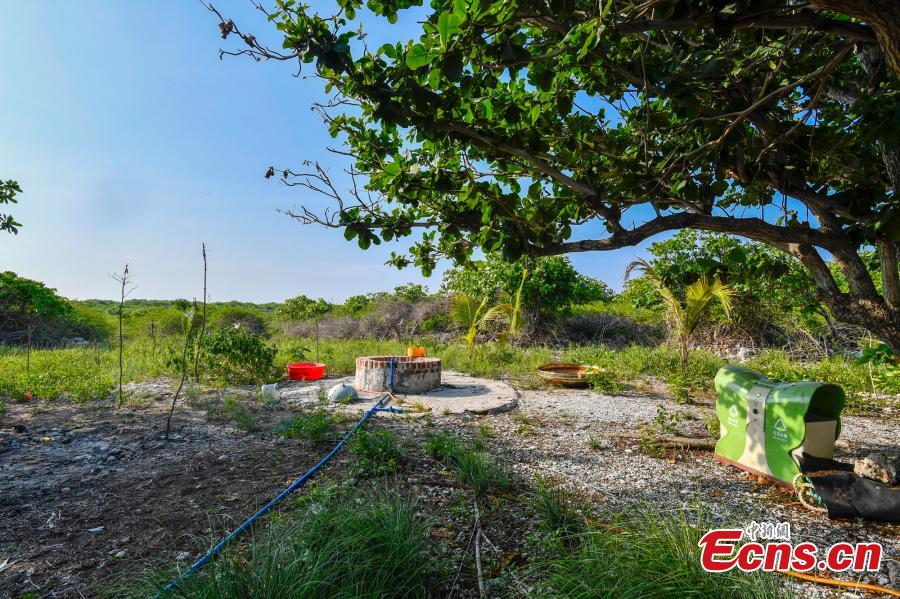
A freshwater well on Ganquan Island in the Xisha Yongle Islands group in South China's Hainan Province, May 22, 2019. (Photo: China News Service/Luo Yunfei)
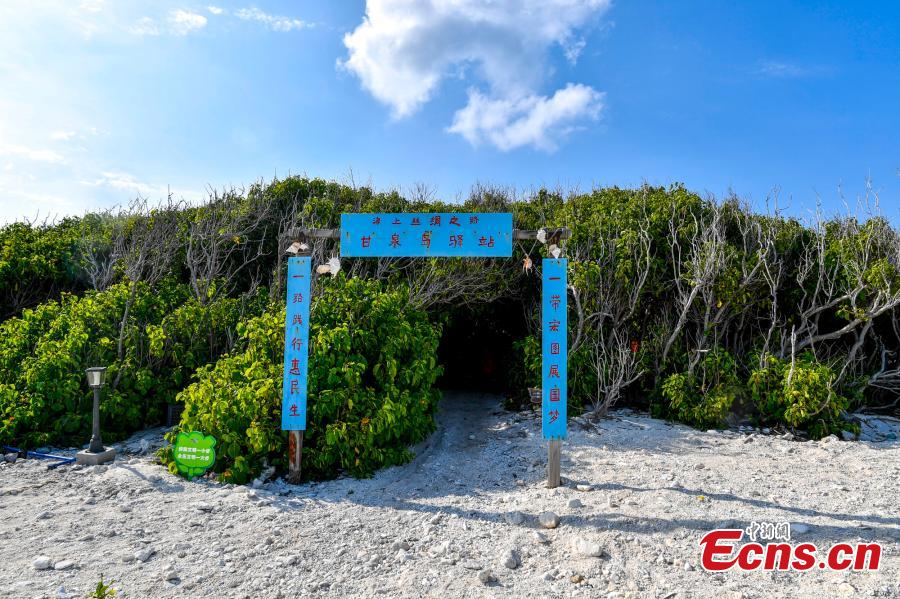
A view of Ganquan Island in the Xisha Yongle Islands group in South China's Hainan Province, May 22, 2019. Named after a freshwater well, the lush, oval-shaped island covers an area of 0.3 square kilometers. The remains of a settlement dating back to the Tang and Song dynasties was found there in March 1974, and the site was later listed as a national key cultural relics site. (Photo: China News Service/Luo Yunfei)
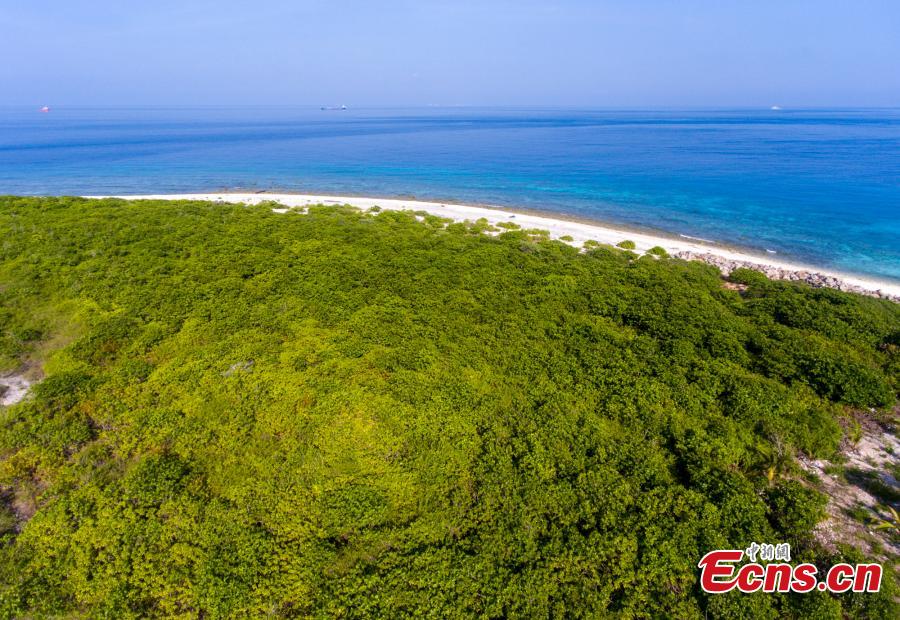
A view of Ganquan Island in the Xisha Yongle Islands group in South China's Hainan Province, May 22, 2019. Named after a freshwater well, the lush, oval-shaped island covers an area of 0.3 square kilometers. The remains of a settlement dating back to the Tang and Song dynasties was found there in March 1974, and the site was later listed as a national key cultural relics site. (Photo: China News Service/Luo Yunfei)
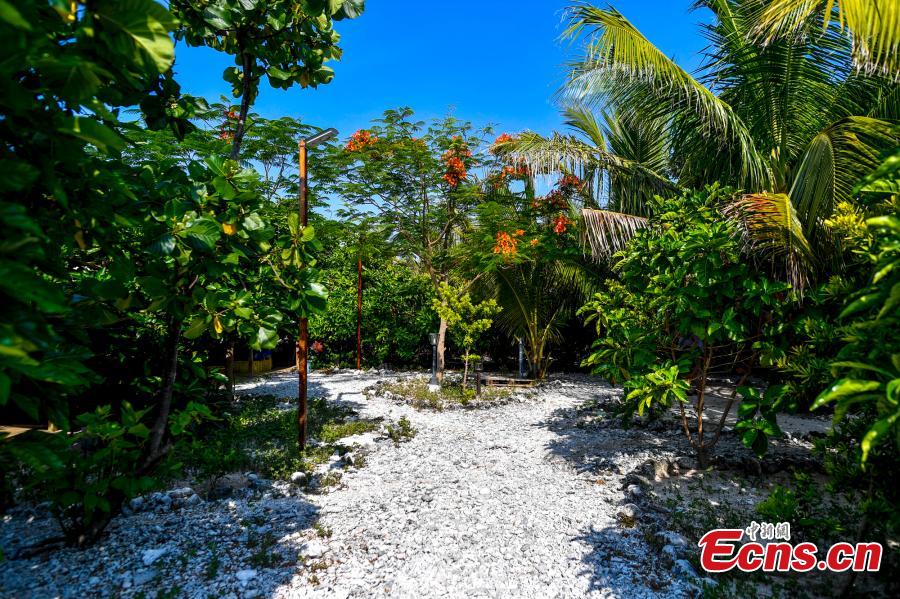
A view of Ganquan Island in the Xisha Yongle Islands group in South China's Hainan Province, May 22, 2019. Named after a freshwater well, the lush, oval-shaped island covers an area of 0.3 square kilometers. The remains of a settlement dating back to the Tang and Song dynasties was found there in March 1974, and the site was later listed as a national key cultural relics site. (Photo: China News Service/Luo Yunfei)
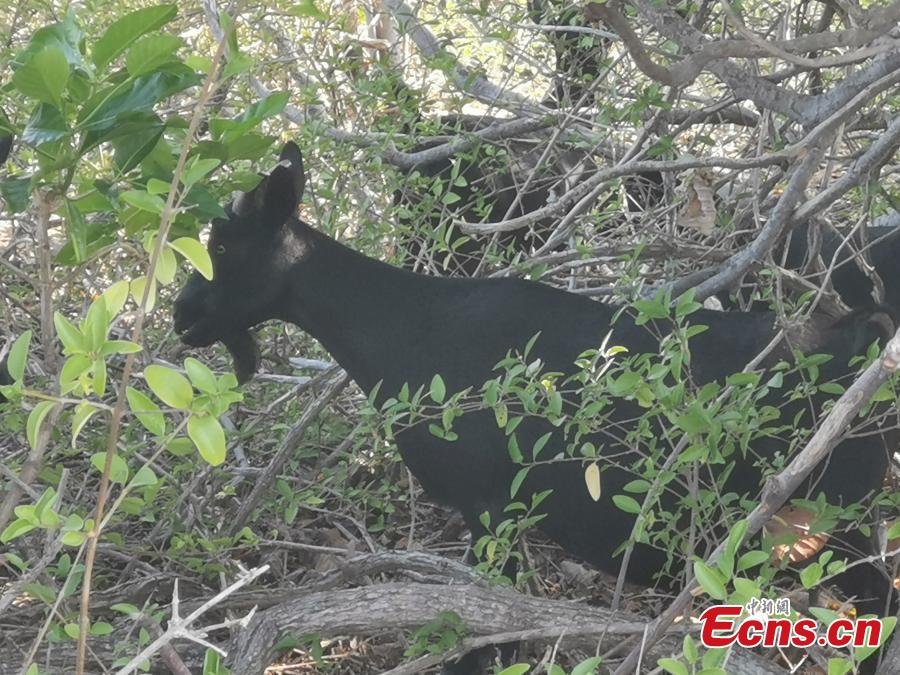
A goat on Ganquan Island in the Xisha Yongle Islands group in South China's Hainan Province, May 22, 2019. (Photo: China News Service/Yang Xu)
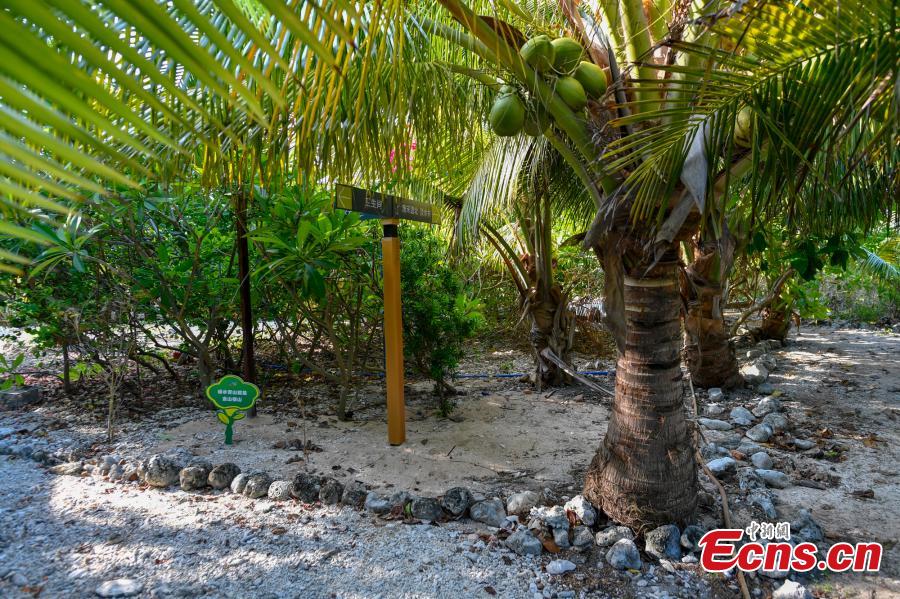
A view of Ganquan Island in the Xisha Yongle Islands group in South China's Hainan Province, May 22, 2019. Named after a freshwater well, the lush, oval-shaped island covers an area of 0.3 square kilometers. The remains of a settlement dating back to the Tang and Song dynasties was found there in March 1974, and the site was later listed as a national key cultural relics site. (Photo: China News Service/Luo Yunfei)
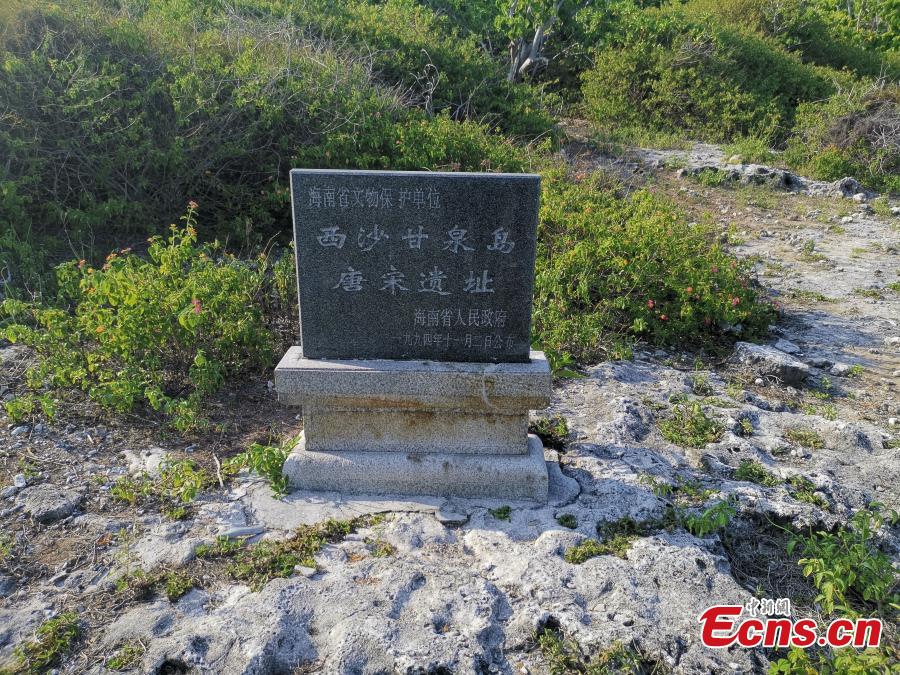
A stone tablet marks the remains of a settlement dating back to the Tang and Song dynasties on Ganquan Island in South China's Hainan Province, May 22, 2019. (Photo: China News Service/Yang Xu)
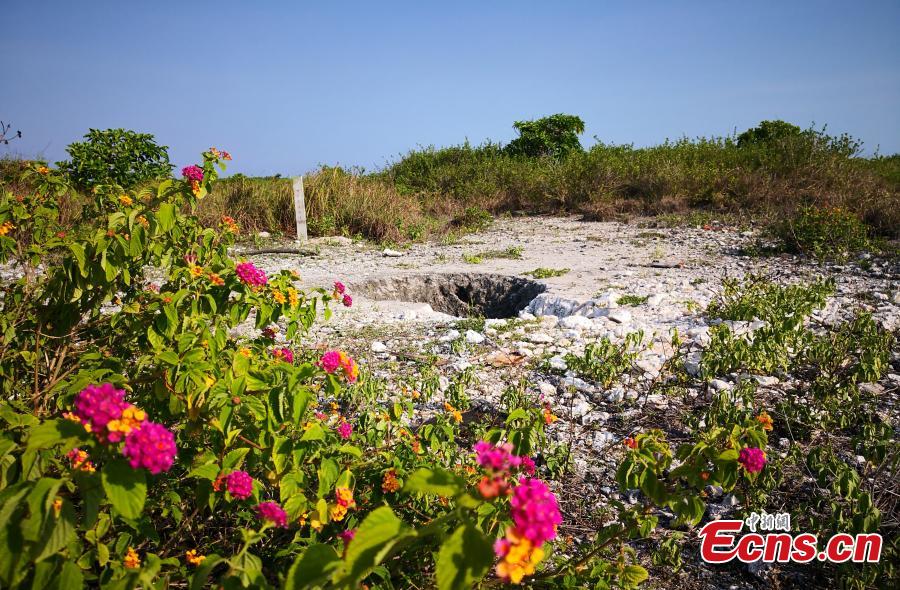
A freshwater well on Ganquan Island in the Xisha Yongle Islands group in South China's Hainan Province, May 22, 2019. (Photo: China News Service/Yin Haiming)

A view of Ganquan Island in the Xisha Yongle Islands group in South China's Hainan Province, May 22, 2019. Named after a freshwater well, the lush, oval-shaped island covers an area of 0.3 square kilometers. The remains of a settlement dating back to the Tang and Song dynasties was found there in March 1974, and the site was later listed as a national key cultural relics site. (Photo: China News Service/Luo Yunfei)














